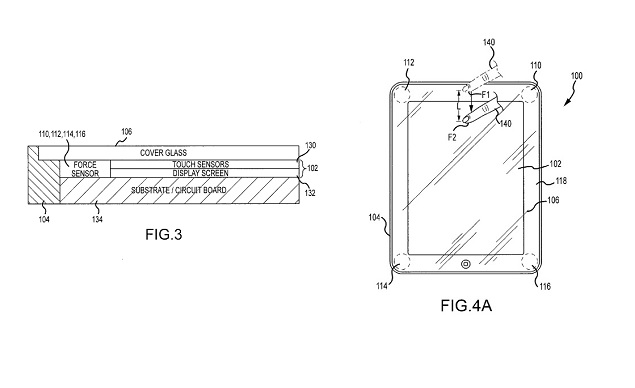- Home
- Mobiles
- Mobiles News
- Apple gets 'sapphire window' and pressure sensitive display patents granted
Apple gets 'sapphire window' and pressure-sensitive display patents granted

Apple, a tech firm best known for its innovations, after introducing a sapphire-based fingerprint sensor on its iPhone 5s, got one of its important patents granted by the USPTO on Thursday, detailing a cutting and processing method for sapphire material. Another patent, applied for a day apart in 2012, was approved along with it, related to pressure-sensitive touch input.
The sapphire manufacturing patent, applied for back in July 2012, details the process of how the Cupertino firm will cut the sapphire material and polish it. The patent also includes the use of lasers for cutting the material into Windows.
"Methods for creating sapphire windows are provided herein. In particular, one embodiment may take the form of a method of manufacturing sapphire windows. The method includes obtaining a polished sapphire wafer and applying decoration to the sapphire wafer. The method also includes cutting the sapphire wafer into discrete windows. In some embodiments, the cutting step comprises laser ablation of the sapphire," states the patent filed under USPTO or United States Patent and Trademark Office.
The patent might be related to Apple's rumoured solar-charging sapphire glass screen, which is said to be incorporated in the Apple iPhone 6 handset.
The second patent approved on Thursday was titled "Gesture and Touch Input Detection through Force Sensing." The patent, also filed back in July 2012, talks about three touch sensitive force sensors that will trigger different functionalities by the device.
The Apple patent details a design concept where pressure sensitive areas are placed around the corners of tablet-like devices to act as secondary input carrier. The patent is aimed at the location and amount of pressure, and we might see this technology make it to the company's iPad tablet.
An example has been given in the patent which states "if the input force is exerted on a top right hand corner of the surface, a first force sensor adjacent the top right corner of the surface may sense a first force value, a second force sensor that may be in a left bottom corner may sense a second force value, and a third force sensor in a left top corner may sense a third value. These three force values may be used to determine a location of a centre of the force or force centroid location."
For the latest tech news and reviews, follow Gadgets 360 on X, Facebook, WhatsApp, Threads and Google News. For the latest videos on gadgets and tech, subscribe to our YouTube channel. If you want to know everything about top influencers, follow our in-house Who'sThat360 on Instagram and YouTube.
Related Stories
- Amazon Great Indian Festival 2024
- Big Billion Days 2024
- Apple Vision Pro
- Oneplus 12
- iPhone 14
- Apple iPhone 15
- OnePlus Nord CE 3 Lite 5G
- iPhone 13
- Xiaomi 14 Pro
- Oppo Find N3
- Tecno Spark Go (2023)
- Realme V30
- Best Phones Under 25000
- Samsung Galaxy S24 Series
- Cryptocurrency
- iQoo 12
- Samsung Galaxy S24 Ultra
- Giottus
- Samsung Galaxy Z Flip 5
- Apple 'Scary Fast'
- Housefull 5
- GoPro Hero 12 Black Review
- Invincible Season 2
- JioGlass
- HD Ready TV
- Laptop Under 50000
- Smartwatch Under 10000
- Latest Mobile Phones
- Compare Phones
- Vivo Y300 5G
- Red Magic 10 Pro+
- Red Magic 10 Pro
- Asus ROG Phone 9
- Asus ROG Phone 9 Pro
- ZTE Blade V70
- Vivo Y18t
- Honor X9c
- Asus Zenbook S 14
- MacBook Pro 16-inch (M4 Max, 2024)
- Huawei MatePad 11.5
- Acer Iconia Tab 10.36 (iM10-22)
- Redmi Band 3
- Xiaomi Smart Band 9 Pro
- Sony 65 Inches Ultra HD (4K) LED Smart TV (KD-65X74L)
- TCL 55 Inches Ultra HD (4K) LED Smart TV (55C61B)
- Sony PlayStation 5 Pro
- Sony PlayStation 5 Slim Digital Edition
- Carrier 2.0 Ton 5 Star Inverter Split AC (24K EMPERIA LXI INV)
- Lloyd 2 Ton 3 Star Inverter Split AC (GLS24I36WGVR)

















